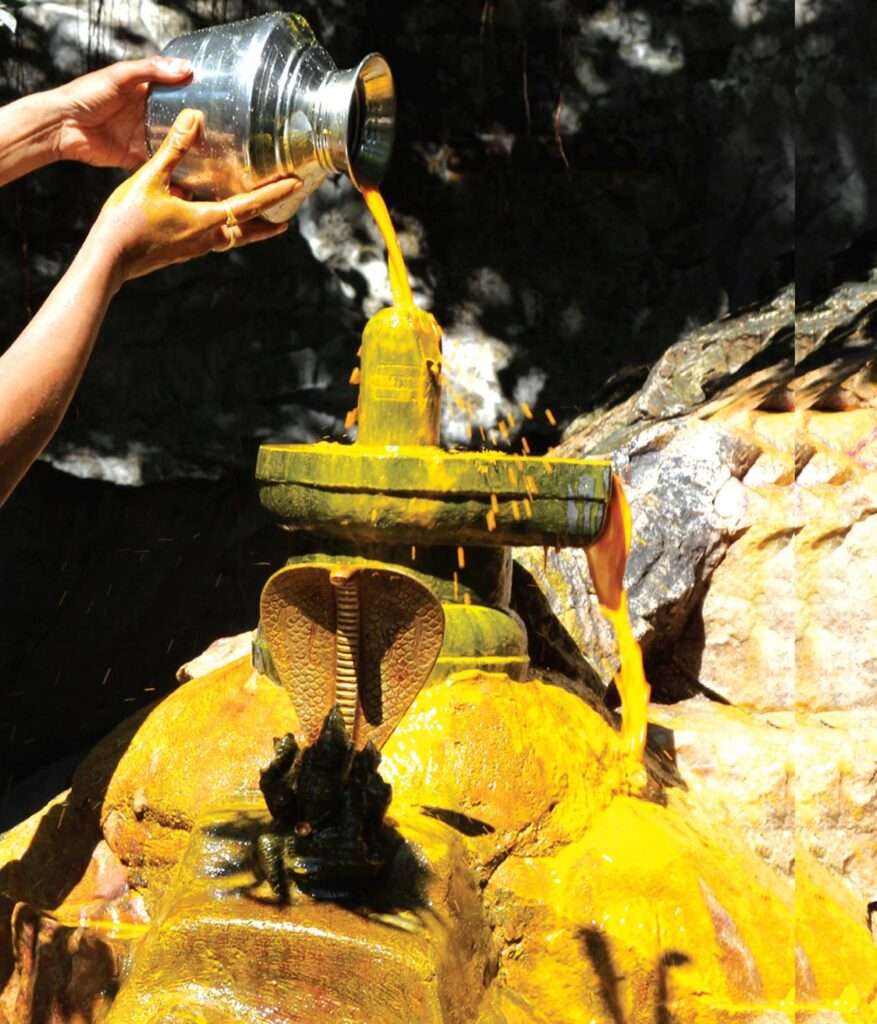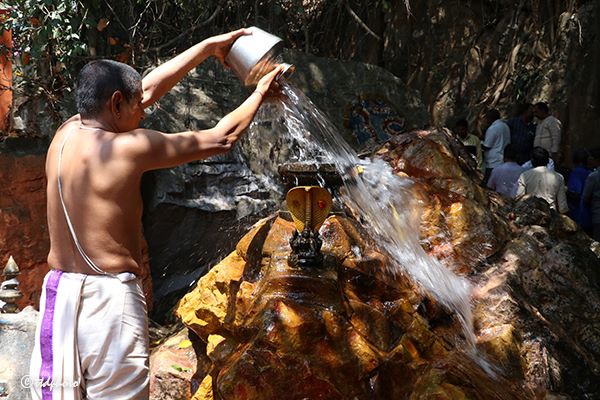Hathiram Bavaji /Sri Hathee Ram Bavaji
Hathi means elephant in Hindi, and Bhavaji frequently chants Ram
Mahanthula Mattam
In the southwest direction of Ananda Nilaya, there is a big beautiful palace on a hillock. This palace is known as Mahanthula Mattam (monastery of Mahanth). Mahanth means a saint or a monk. A saint by the name of Bavaji had established this Mattam (a monastery).
He was a great devotee of Lord Venkateswara. People out of respect used to address him as ‘Hathee Ramji or Hathee Ram Bavaji or Sri Hathee Ram Bavaji or Hathiram Bhavaji.’ Hathee Ramji belonged to the Bhakti Tradition started by Swamy Ramanandji of North India. He was a great Vaishnavite.
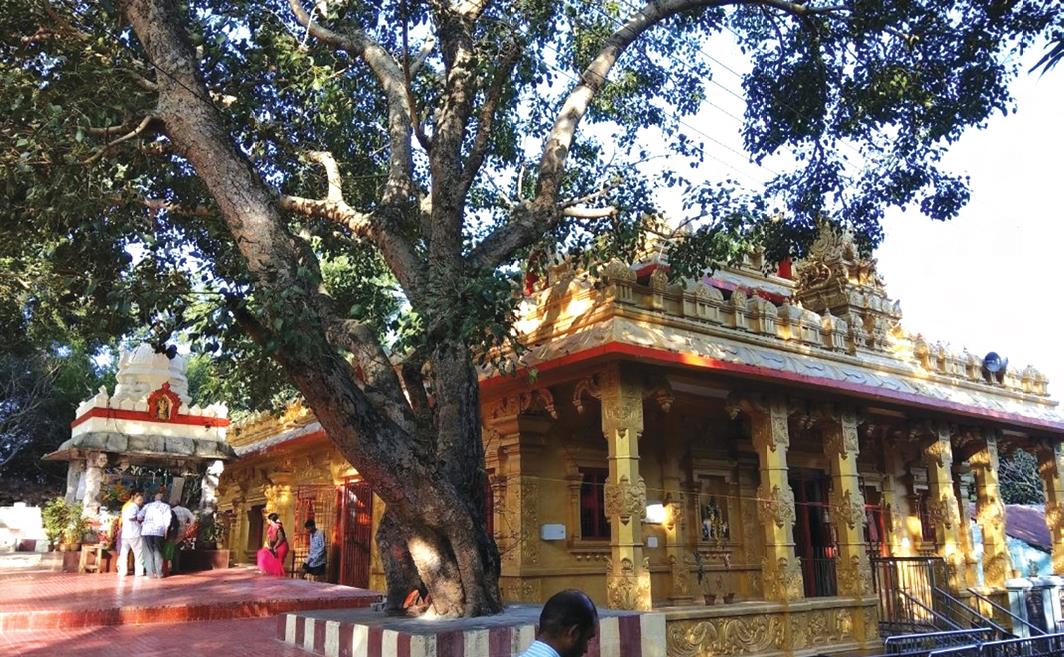
Abhayanandji
About 500 years back there was a Ramanand Matt in a village called Kredal Krela some 25 miles away from Delhi. A monk by the name ‘Abhayanandji’ was heading the matt. He was known as Mahanth of that matt i.e., monastery. Hathee Ramji was his disciple.
At the behest of his guru, Hathee Ram Bavaji started visiting holy places. Finally, he visited Tirumala Kshethra. Seeing the serenity of the place he selected Tirumala Kshethra for doing penance. He was further attracted by Lord Srinivasa’s Grace, Kindness and Benevolence.
By that time people used to say that if there is any God in this Kaliyuga, He is Venkata Nayaka (Kalou Venkata Nayakaha). So he decided to stay back there permanently. This determination made him establish a monastery on a small hillock near Ananda Nilaya.
Hathee Ramji was a great devotee of Rama. He thought Lord Venkateswara was no other than Ayodhya Ram and started worshipping Him more devotedly.
Bavaji offering food to devotees
Bavaji felt that God was not only dwelling in Ananda Nilaya but also in the hearts of His devotees. He could see God in every devotee who came for Lord Venkateswara’s darshan. This made him offer food to pilgrims and saints.
Lord Venkateswara was satisfied with the selfless services rendered to His devotees by the Bavaji. People say Lord Venkateswara used to answer every call of Bavaji.
Because of these feelings, devotees started visiting Bavaji’s monastery after having the darshan of Lord Venkateswara. This became rather a routine for every pilgrim.
Bavaji became very popular with pilgrims. They started giving first preference to Bavaji. They felt that Bavaji’s darshan was as good as Lord Srinivasa’s darshan because Lord Srinivasa Himself especially liked Bavaji.
Game of Dices
Every night after Ekantha seva silence used to prevail upon Tirumala Kshethra. When everybody was resting in their respective houses, Lord Venkateswara used to step out of Ananda Nilaya. He will visit Bavaji’s monastery and spend some time with Bavaji.
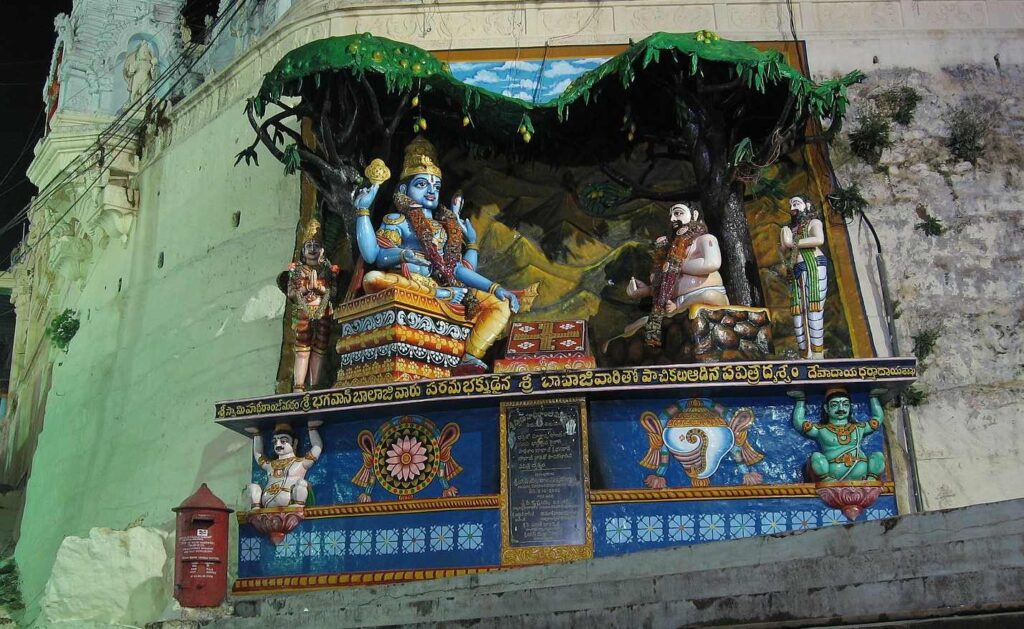
They used to play the game of dice. The play it seems had even some betting also. During the play, they used to have some heated discussions. Whatever the discussion it is only Bavaji to the upper hand. Maybe Lord Venkateswara used to lose the play to make His devotee win.
Lord used to derive immense pleasure when His devotee won and He lost the game. This was a daily routine in the monastery during nights.
No one can else see Lord Srinivasa
The disciples of Bavaji and his followers felt that their Guruji was talking to someone during the night. Sometimes they used to hear the rolling sound of brass dice. But nobody could see Lord Srinivasa. Soon the news of some invisible man playing dice with Bavaji spread like wildfire.
Rama Patram
People’s esteem doubled as far as Bavaji was concerned. To show their respect to Bavaji people right from commoners to Kings started donating according to their mite. With donations received from one and all Bavaji began to provide tasty food to pilgrims and visitors to the matt.
He was providing sumptuous food to one and all. But every day he used to eat one leaf by the name “Rama Patram” and used to fast and meditate.
People had high regard for Bavaji. They all knew that Bavaji was a favourite devotee of Lord Venkateswara. People became disease-free when they had the darshan of Bavaji. Their problems were solved by going near to Bavaji.
By his touch people received solace. He fed people but never had anything. His name and fame reached the nook and corner of the world.
King of Chandragiri Testing Bavaji
The King of Chandragiri once thought of testing the great pious monk Sri Bavaji. He called him and started criticizing him. He said: “People say that you not only converse with Lord Venkateswara but also play a game of dice with him. This is a publicity stunt to collect more and more money from innocent followers. You are cheating people.
Why the name Hathee Ram Bavaji
If what people say is true, then you eat a cartload of sugarcane and prove your greatness and spiritual strength. If you fail to prove yourself you will be driven out of Tirumala Kshethra”. On that night he ordered many cartloads of sugar cane to be brought.
The king locked Bavaji in the cattle shed and left the place. As usual, even on that day, Lord Venkateswara came to Bavaji. As usual, they played the game of dice. While playing with Bavaji He assumed the form of a Giant Elephant and started eating them. People outside the locked cattle shed heard elephants roaring. Somebody peeped through the keyhole. They saw a giant elephant.
When they opened the door of the cattle shed, they could neither see the elephant nor the cartload of sugarcane. People were taken aback. They got themselves convinced that Bavaji is a great devotee and could do some miracles.
Out of respect, they began to address him as ‘Hathee Ram Bavaji’. In Hindi Hathee means an elephant. After knowing about the miracle, emperor Giridhar Das felt very happy. He approached saint Hathee Ram Bavaji and prostrated before him.
He asked to pardon him and take him as one of his disciples. He became Giridhar Das. He became a Viragi i.e., Bairagi. Some began to address him Bairagi. Disciples of Hathee Ram Bavaji began to call him by the name Viragi emperor, Bairagi emperor.
From that day onwards Hathee Ram Bavaji had kingly status. He had a crown, throne, palanquin etc. The palaces belonging to the king in Tirupati became the monasteries of Mahanth. Even though Mahanth Hathee Ram Bavaji had no administrative control over temple management he became a prominent person in most of the affairs connected with the temple and its day-to-day activities.
The tradition of offering fresh cow’s milk, and butter in the morning was introduced from that day onwards. He also started giving crude camphor Harati to the Chief Idol. Even to this day these services like offering fresh cow’s milk and butter are being carried out only in the name of Hathee Ram Bavaji.
Afterwards, because of the disciples and their donations, he acquired lands and property. Because of enormous movable and immovable property, the monastery acquired the status of a kingdom. It has now become a prominent guest house for pilgrims coming from far north and south.
Many Years in Service of Lord Venkateswara
After spending many years in the service of Lord Venkateswara, Mahanth Hathee Ram Bavaji settled down in an Ashram built between Gogarbha Theertham and Akasa Ganga. He started spending his time observing silence and also doing penance.
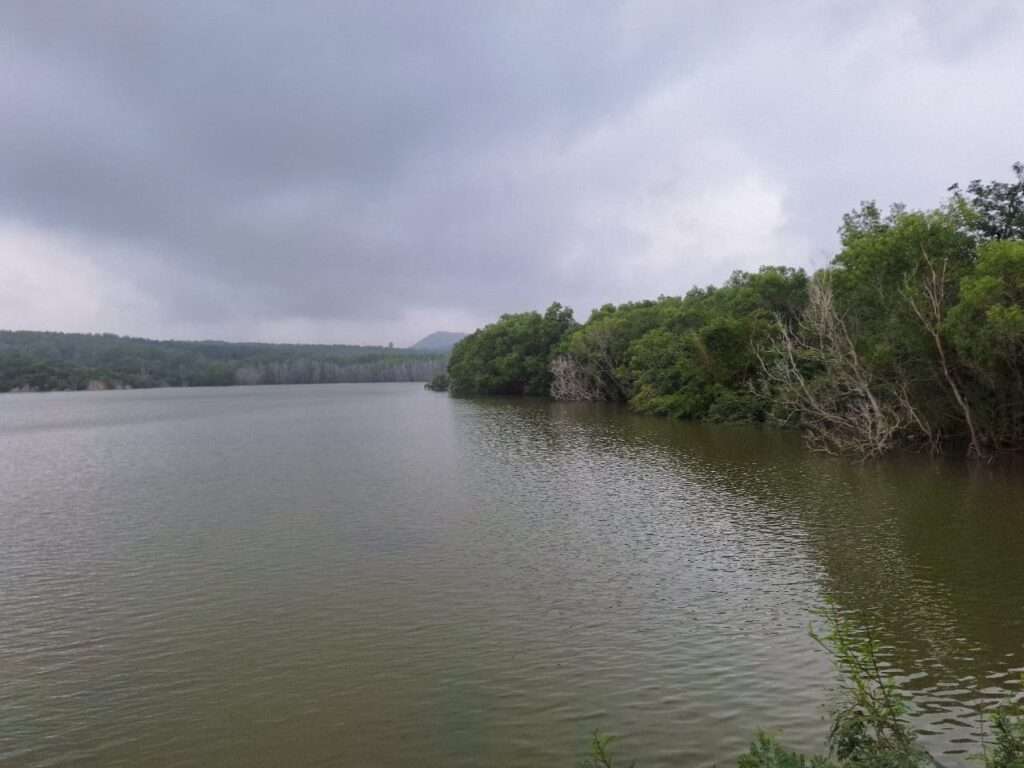
He used to have sweet Rama Patram only as his food. His penance was disturbed because of ever growing number of his devotees. Therefore on a Bahula Thrayodasi day of Aswayuja month, near Homagundam, a fireplace of Venugopala Swamy temple which he had himself constructed, attained Jeeva Samadhi.
Sri Hathee Ram Bavaji Barsi
A day before Naraka Chaturdasi in the Aswayuja masa i.e., two days before Deepavali even to this day his death anniversary is celebrated on a grand scale in the monastery. It is called ‘Sri Hathee Ram Bavaji Barsi’ (tomb). On that day the Idol of Laddu Gopala Krishna will be taken up to Venugopala Swamy temple which is very near Akasa Ganga Theertham, in procession.
Even to this day, T.T.D. provides two big umbrellas, two elephants and also a piped music party for this grand procession. There at the Venugopala Swamy temple poojas will be performed on a very grand scale. At the Samadhi apart from Abhishekam even special poojas will be performed.
A large number of devotees of Hathee Ram Bavaji, pilgrims, and the natives of Tirumala actively participate in this celebration.
On the southern side wall of the silver door (Nadimi padikavali) entrance we can see a sculpture. This sculpture depicts a dice play being played by Hathee Ram Bavaji and Lord Venkateswara. By their side, we can also see the sculpture of Giridhar Rayalu (Giridhar Das) the king of Chandragiri interestingly watching the game of dice.
Even this sculpture is gold-plated. The silver door entrance tower, it is said, was last renovated during the years 1472- 1482 A.D. There is one more similar sculpture at the exact point where Hathee Ram Bavaji and Lord Venkateswara played the game of dice. This sculpture is placed on an elevated platform in Mahanth Hathee Ram Bavaji’s monastery.
